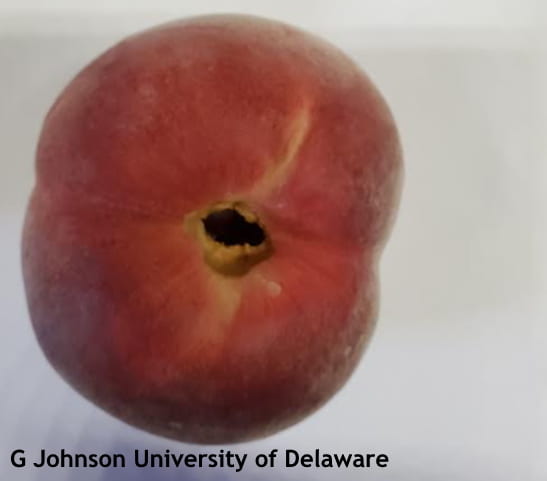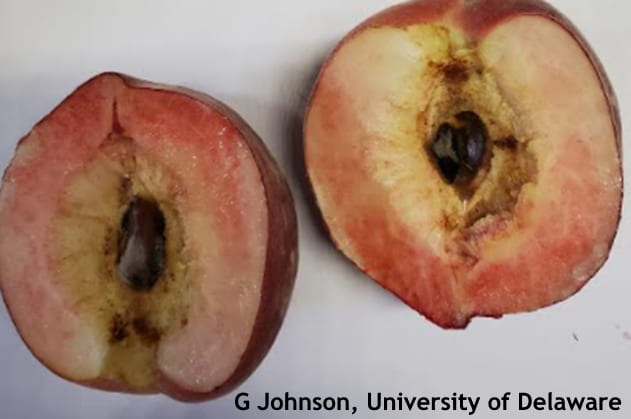Gordon Johnson, Extension Vegetable & Fruit Specialist; gcjohn@udel.edu
Split pit in peaches and nectarines is a physiological disorder that refers to the opening of the pit at the stem end of the fruit. This split becomes evident in the third stage of fruit growth, usually referred to as the final swell. Split pit fruit can develop rot problems much more quickly than sound fruit and allows for easy entrance to insects.
The exact causes of pit breakage are unknown. Low temperatures and/or freeze damage during flowering and early fruit development may be factors. Fruit of most early peach cultivars enters the final swell of growth before the pit is completely hardened. As the fruit enlarges rapidly, stress exerted by the expanding flesh causes much of the pit fracturing. Because most early varieties are cling types, the strong attachment of flesh to pit probably enhances the forces exerted on the immature pit by the expanding flesh.

Stem end of peach showing opening caused by the pit splitting. This fruit will be more susceptible to rots and insects.
Cultural practices that enhance fruit size (such as thinning, nitrogen application, and irrigation) usually increase the level of split pit. If freezes excessively reduce fruit loads, generally pit breakage increases. Excessive rain in the latter stages of fruit growth is another uncontrollable variable that aggravates pit breakage.
Cultural control of split pit includes leaving heavier crops on problem cultivars (less thinning), limiting irrigation and nitrogen fertilizer near harvest, and choosing cultivars that do not have major problems with split pit.
This information was adapted from https://pnwhandbooks.org/plantdisease/host-disease/peach-prunus-persica-split-pit

Split pit peach cut open.
